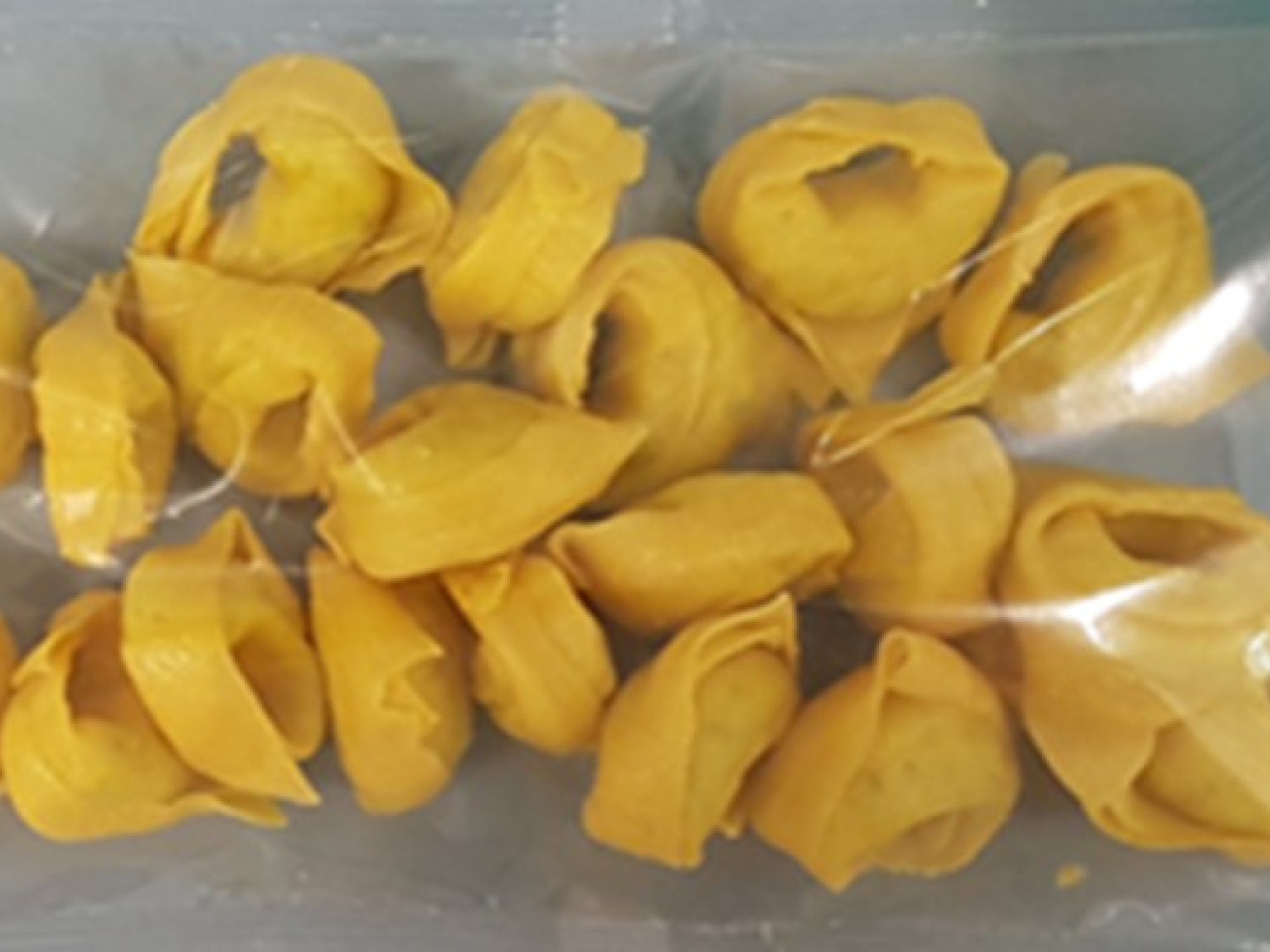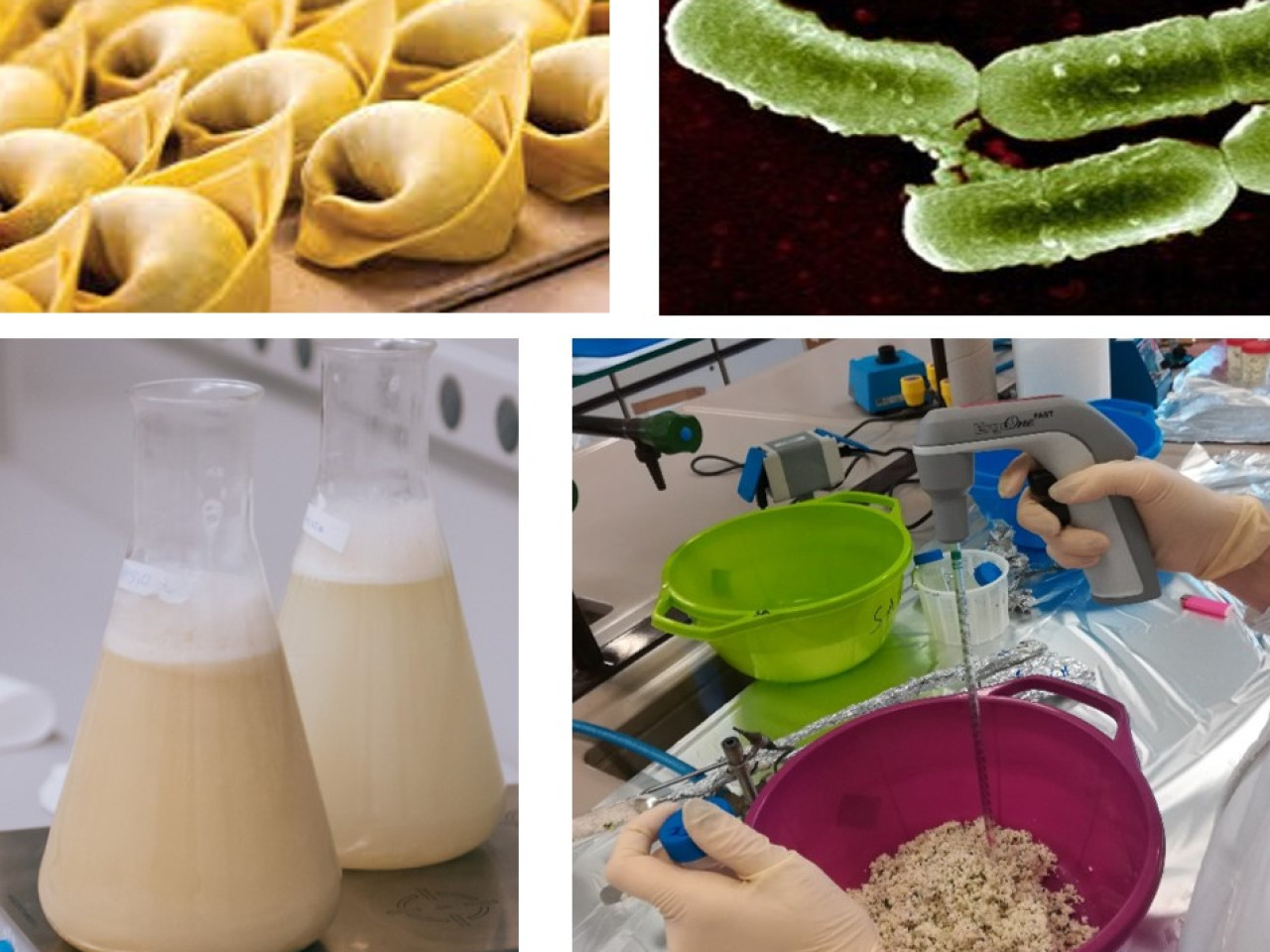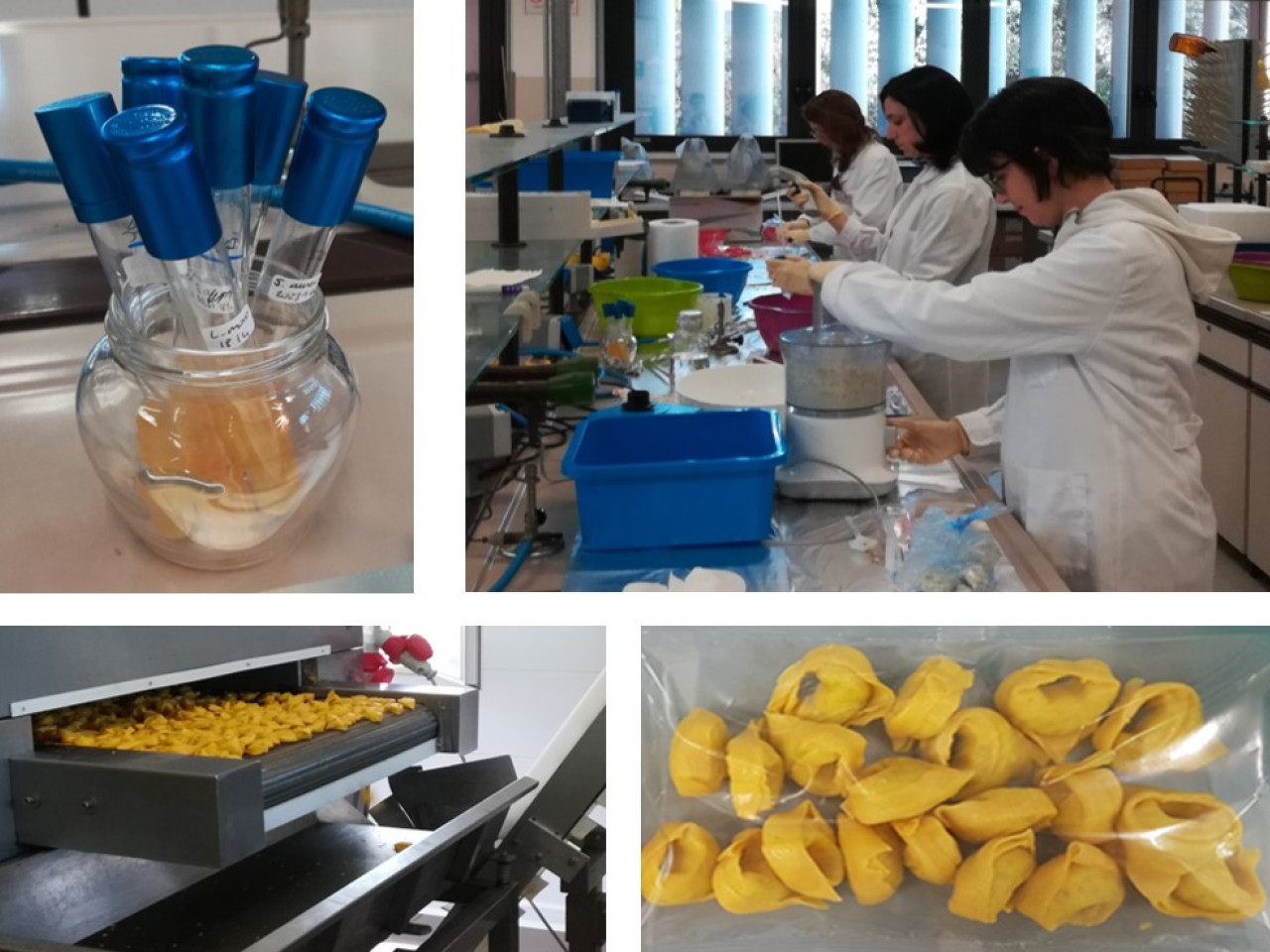The aim of the project is to prolong the shelf-life of fresh filled pasta using bioprotective cultures endowed with antimicrobial activity against pathogens or spoilage microflora. The project is divided in two phases: 1) evaluation of microbial contamination before/after pasteurization and state of the art of the shelf-life of the product stored at refrigerated temperature (focusing on two representative references); 2) use of bioprotective cultures belonging to lactic acid bacteria to preserve the product, considering their ability to grow in the system by inhibiting the spoilage microflora and pathogens such as Staphylococcus aureus, Listeria monocytogenes and Escherichia coli. The final aim is also to evaluate the possibility to reduce thermal treatment (thanks to the activity of lactic bioprotective cultures) to better maintain the organoleptic features of the product.
 Samples of fresh filled pasta
Samples of fresh filled pasta
The innovative aspects of this project are: i) set up of a strategy to stabilize fresh filled pasta based on the exploitation of microbial cultures endowed with antimicrobial activity against spoilage microflora and pathogens; ii) possibility to combine this strategy with milder thermal treatments, maintaining the sensorial features of the product; iii) use of different strains of lactic acid bacteria (alone or in combination) to give peculiar aromatic characteristics (cheese and butter flavours) to the final product.
The topic of this project deals with a food sector important for the national and regional economy. The strategy set up in the present project can be applied and adapted also for other similar products (different types of filled pasta) and for other companies working on the same food supply chain. The synergic effect of bioprotective cultures and mild thermal treatments allows to prolong the shelf-life while maintaining good sensorial properties and therefore can be helpful for the food companies to reach new markets.
 Strategy to increase the shelf-life of fresh filled pasta
Strategy to increase the shelf-life of fresh filled pasta
Use of lactic cultures with bioprotective activity to prolong the shelf-life of fresh filled pasta
This project has defined a strategy to prolong the shelf-life of fresh filled pasta based on the combination of a pasteurization treatment (milder than those traditionally adopted) and the use of microbial cultures endowed with antagonistic activity against pathogens or spoilage microflora. After the evaluation of the microbiological contamination of the initial product, some microbial cultures were chosen in relation to the physico-chemical characteristics of the product and the process. These bioprotective cultures were added to the filling of fresh pasta and, after a proper incubation, the filling was placed in the production line. The final product was stored and monitored overtime (chemico-physical and microbiological analyses) and the data obtained were compared with a control sample (product without the addition of bioprotective cultures). The results showed that the presence of these cultures significantly affects the microflora, favouring the proliferation of other lactic species safer and with less impact on the organoleptic profile. This strategy can be helpful to reduce thermal treatments, therefore maintaining a higher quality of the product and its rheological and sensorial features.
CIRI Agri-food, Arte della Pasta srl
The results can be used by the same company to improve similar products or by other companies working in the same field.
The results of the project have been also published in an international scientific journal: “Tabanelli et al. (2020). Effects of bioprotective cultures on the microbial community during storage of Italian fresh filled pasta. Food Control, doi: 10.1016/j.foodcont.2020.107304”
 Example of use of lactic cultures in the filling of fresh pasta
Example of use of lactic cultures in the filling of fresh pasta

